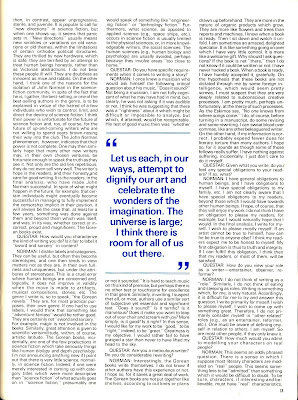Secrets of the 70s: Genital Herpes
Part One: The Intimate Agony
NOTE: graphic photographs of Diseased Genitalia below !!!!!!
It may be 1972 and you’re looking forward to a forthcoming ‘key party’ at a neighbor’s house elsewhere in your subdivision, and when you arrive you notice that some of the other couples have chosen not to come; “they weren’t feeling well”….
Or maybe it’s 1974 and the last week in August and the gang has gathered at the beach house for one last good time party before the summer ends and you find that one or two of your friends are feeling a little ‘down’ and just aren’t into the festivities all that much….
Or maybe it’s 1976 and at your workplace you notice every now and then that some of your younger, hipper co-workers have those occasional days when they seem a little…unwell. They’re not blowing their noses or sneezing or coughing, they don’t sound congested, they don’t seem to have the ‘flu bug’ or the ‘stomach flu’ but they nonetheless seem lacking in energy, slow, tired…and when they think you’re not looking you may catch them furtively pulling at the front of their slacks or trousers or dress with a quick grimace passing over their faces….
Or maybe it’s 1977 and a professional athlete everyone was counting on to step up and deliver an impressive performance in the Big Game instead flubs the plays and trudges to the dugout or sideline or bench in a slow and tired manner….
Or maybe it’s the late Spring of 1978 and you and your chick have been attending Plato’s Retreat on a monthly basis now for several months of great ‘Swinger’ fun. But one morning you wake up feeling a bit flushed, a bit tired, and you notice that the shaft of your penis has a reddened, inflamed area and when you look closer you see what looks like a set of tiny blisters raised above the skin, and these blisters are painful and they feel like they are burning when you touch them. You think to yourself, dumbfounded: maybe I’m allergic to my girlfriend’s spermicide, or her diaphragm, or maybe that Tiger Balm we were using the other night….
Or maybe it’s 1983 and you’re lounging on the couch and a TV movie comes on starring the heartthrob ‘Luke’ from the popular soap opera ‘General Hospital’: Anthony Geary. The movie is titled Intimate Agony and as you watch, it becomes clear it’s one of those public service-type films and it’s concerned with…genital herpes !
Ahhh, yes, genital herpes…also known as herpes simplex (not to be confused with herpes zoster, the viral agent of chickenpox). One of those things that pop culture references to the swingin’ 70s tend to avoid mentioning. One of those things that doesn’t get worked into the scripts for ‘The Ice Storm’, or ‘Swingtown’. One of those things that was a real part of life for many unfortunates back in the 70s….and worst of all, there WAS NO CURE.
The herpes simplex virus (electron micrograph)
www.unc.edu/~jdglab/emphotopages/emicp8recombination.shtml
Millions of otherwise healthy, horny young adults spent multiple intervals throughout the year dreading the sensation in their private regions that meant the onset of a ‘flare-up’. They developed a low-grade fever, headache, muscle and joint aches, fatigue, and painful blisters and ulcers on the most sensitive parts of their bodies. With the exception of simple topical remedies, which really did little but dull the discomfort a bit, there was nothing the herpes sufferer could do but wait the infection out. With some luck, after a week (or longer) of abject misery, the blisters would resolve, the redness and inflammation would subside, and within another week or two, there would be no sign that that particular section of tissue had been teeming with herpes virus.
Our young swingers could get back into their scene…..until, at least, the next flare-up came about. Because once you contract genital herpes, you have it for life: the virus resides in a latent form in the large, long-lived nerve cells that connect the spinal cord with the nerve network of the body. A waning in one’s immunity- triggered by illness, exposure to UV light, fatigue, or drugs – and the virus will travel down the nerve cells to invade the epidermal cells at the end of the nerve cell network. Once in the epidermal cells, the virus will replicate.
The insidious thing is, there can be infectious virus present in the skin at this site of replication, even though the host may not yet be aware of any physical symptoms. So even if your 70s swinger didn’t have any visible ulcers or redness, he or she was still perfectly capable of passing the virus on during those Intimate Moments rolling around in the darkness on the shag carpet.
No one really knows how many people harbored genital herpes in the 70s. I've tried to find information on the prevalence and incidence of the disease at PubMed, but what few documents or journal articles are available from that era focus mainly on the management of symptoms.
Genital herpes became one of those burdens of life you couldn’t get away from, like diarrhea, acid reflux, and migraines.
But in 1977 a ray of hope emerged. And that's the topic of Part Two: Relief for the Stricken.








































































